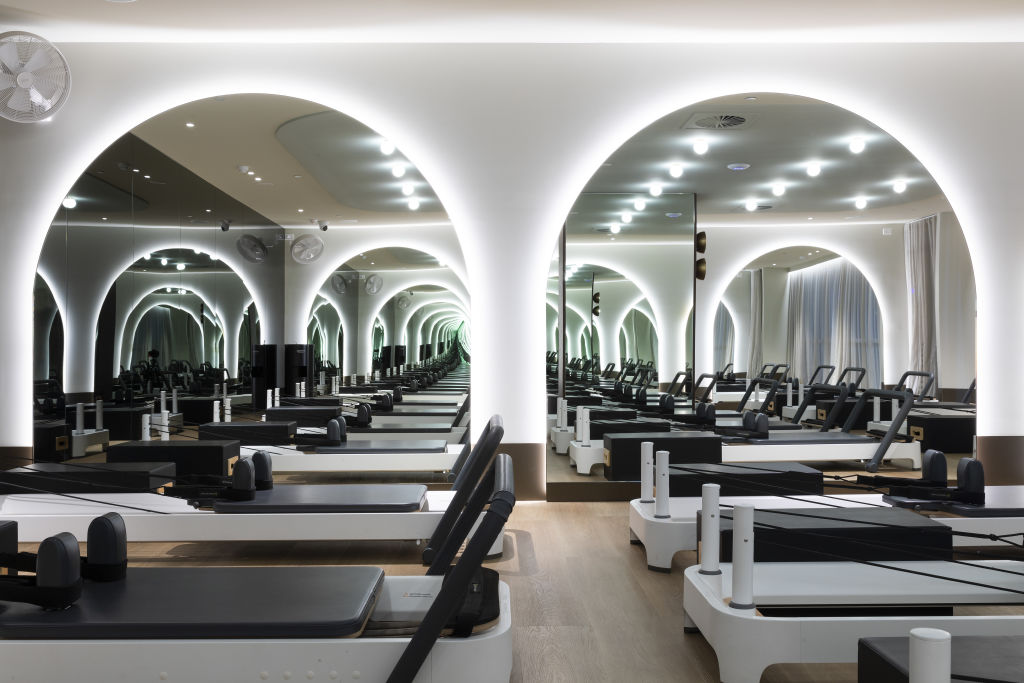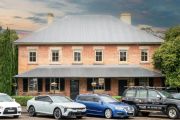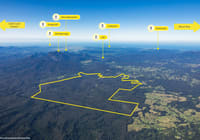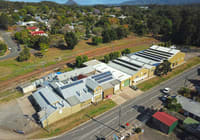
How boutique gyms are reshaping Australia's multibillion-dollar fitness industry
Boutique gyms with concierges and hotel-style facilities are reshaping Australia’s nearly $3 billion fitness industry.
The demand for personalised workouts is drawing clients out of loud, large-format franchise gyms, and into smaller, bespoke studios.
The number of gyms and fitness centres around Australia grew an average of 3.9 per cent a year between 2019 and 2024, according to IBIS World research. The industry last year was estimated to have a market size of $2.9 billion and, within that, boutique formats are gaining traction and popularity.
A study by software business ABC Fitness found Millennials in the US are driving new studio memberships, which are up 27 per cent overall across the second quarter of year.
The demand is mirrored in Australia, which led Simon Anderson and Franco Atashi to open SOMA Health & Wellness Club, an exclusive fitness club in Sydney’s CBD financial district.
“It’s a private members club,” Anderson says. “I’d say what brings clients to us is the privacy and the service. As you walk in, you’re greeted by a concierge. Most people are greeted by their first name. A lot of people describe it as a five-star hotel, which was the concept.”
Eighty-three per cent of boutique gyms in the United States have an average annual turnover of at least $US250,000, and 75 per cent are expecting their member base to grow, according to data from McCrindle’s Boutiques & Fitness Studios: USA Industry Report, released last year.
Access is typically limited – 54 per cent have between 100 and 399 active members, the research shows.
SOMA Health & Wellness Club’s membership is capped at 500. Six years after opening, it has reached that threshold, and is in the process of establishing a waiting list.
Actor Rebel Wilson was among Soma’s first high-profile clients. The gym is minutes from the Moore Park Disney Studios and attracts celebrities, barristers, property moguls, entrepreneurs and musicians, Anderson says.
“There’s a lot more Hollywood actors coming out here, and we’ve got a lot of them coming to Soma,” he says.
“When Franco and I started, we were both personal trainers at a platinum Fitness First, which at the time, was probably one of the best gyms around. We had a lot of corporate professionals as our clients and we really gelled with that, bettering them in their day job, giving them more energy, enhancing their sleep, focusing on nutrition, stress and coping.”
The focus on overall health and wellbeing following the COVID-19 pandemic is a major motivator in the flight to boutique gyms, the McCrindle research found.
People turned to online, one-on-one workouts during the pandemic, and have since sought that customised experience in a gym membership. An interest in holistic health is another factor. Boutique gyms offer saunas, massage studios and ice baths, while the big gyms have a more basic offering.
Soma has five massage therapists working six days a week.
Above all, clients in a smaller setting feel more supported to reach their goals, says Steve Willis, founder of Get Commando Fit program and gym in Sydney.
Willis’ program started online, but for the past six years, clients have been able to train in person at his Rouse Hill headquarters.
“Post COVID, it’s definitely taken off,” he says. “Large-format gyms are about access. You pay a nominal fee to access a facility. Whereas we’re about coaching, accountability and community. People want that.”
Willis, who is well-known through his role as a trainer on The Biggest Loser TV series, says clients come to his gym to master techniques and to be professionally guided.
The clients are varied, from teenagers learning about physical health, to time-poor professionals and mums with babies. Social media’s emphasis on wellbeing has played a part.
“I think it tends to be more about people who put their health and wellness first,” Willis says. “It doesn’t really matter about the demographic, but we do have a broad spectrum.
“The trend is to be proactive with your health and wellbeing, make better choices and put it into your daily or weekly practice. People don’t want to lose quality of life as they get older. I think the younger generations are understanding how important it is to get on top of that from an early age.”










